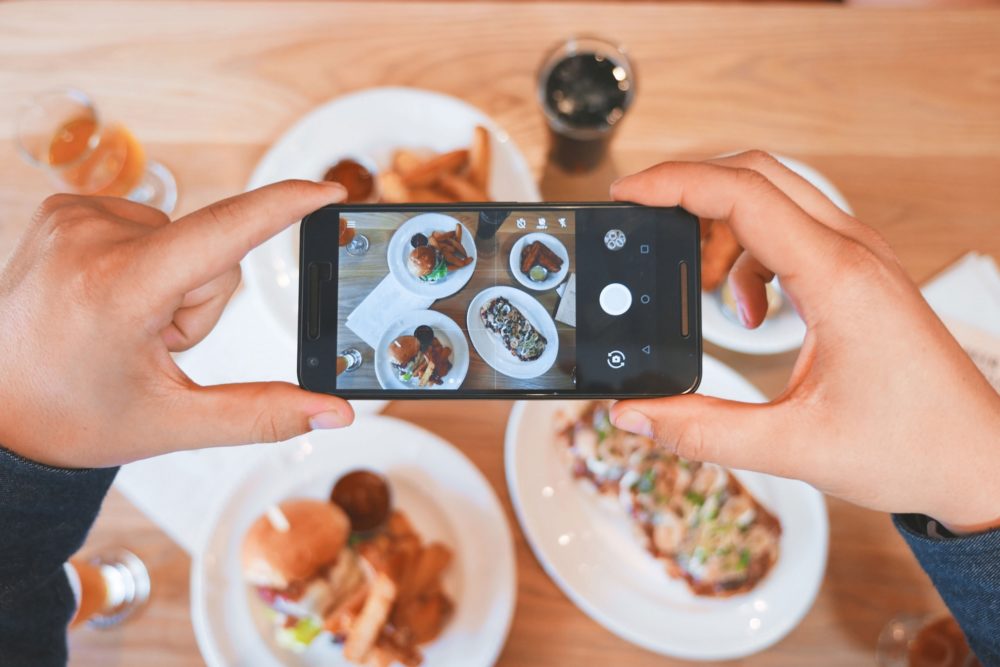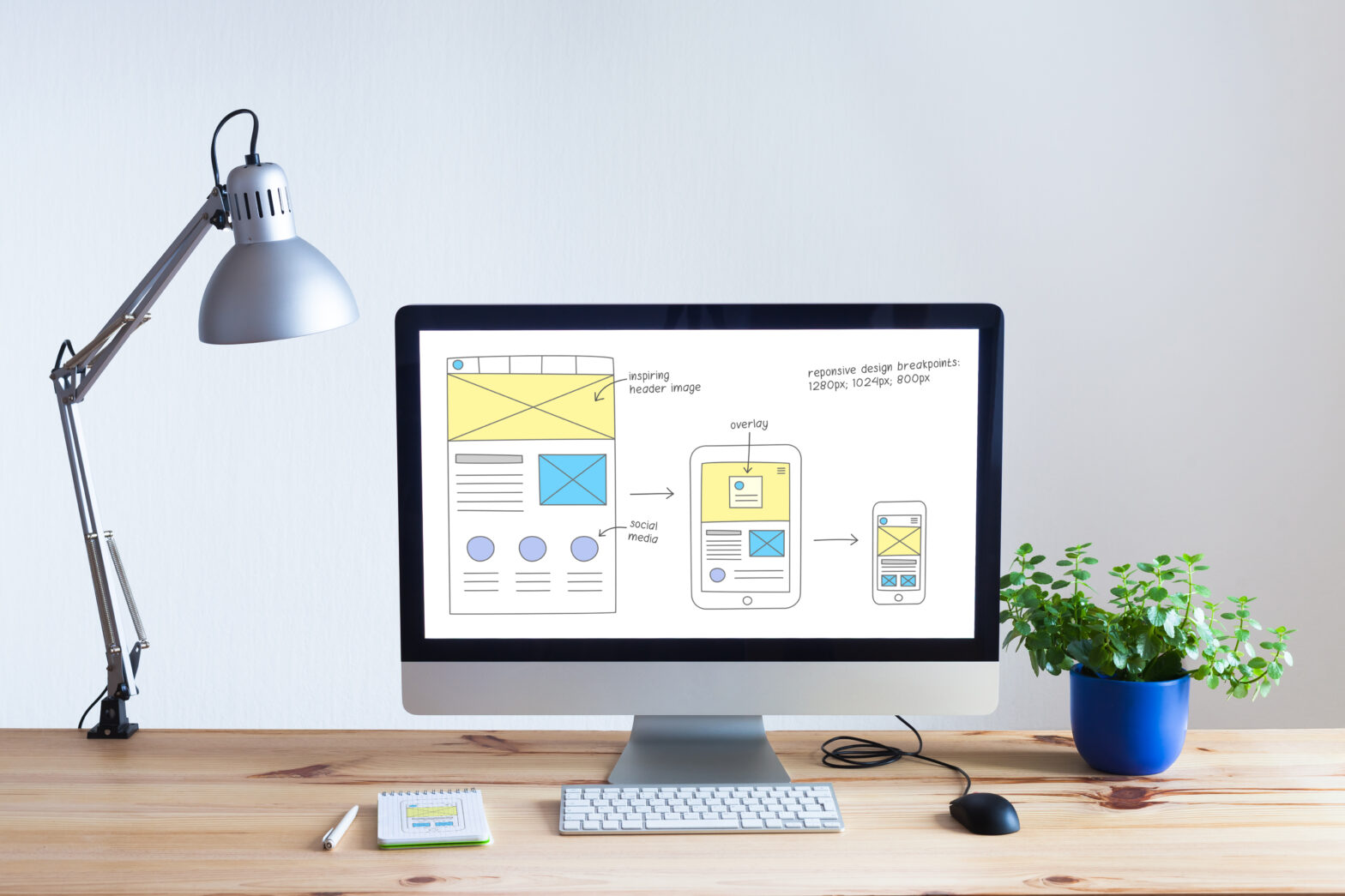The number of independent sellers has ballooned since platforms like eBay, Amazon Marketplace and Facebook Marketplace came to the fore.
They’re great for first-time and casual sellers with a ready-made market of customers searching for items that they’d struggle to find in the shops. However, you could be facing commission and listing fees, which will reduce your profits. You also have less room to customise your product description and how you present them. Bear in mind that they’re competitive selling platforms, especially for saturated markets like health and fitness.
Before you jump in, think about whether selling through your own website would be better for you.
Amanda Johnson, owner of Elsie’s Attic, talks about why she moved away from the big selling platforms.
What made you decide to go from eBay and Facebook to selling through your own website?
Selling on eBay is quite tricky as there are lots of hoops to jump through including fees and competition, so it can be quite tricky for a small business selling relatively low-value items to stand out.
Similarly, Facebook was great, but it meant I had to personally interact with every customer for a sale and issue invoices through PayPal. While it is always lovely to chat to customers, that model was simply not scalable and it was very difficult to take any time off, as I would worry we would miss messages and, by extension, sales.
Also, Facebook is going through a lot of changes, which means it is harder for businesses to have their content shown to potential customers. So, having our own website was the obvious answer. People could see all our items and shop with ease and confidence any time of the day or night.
What were the main challenges you faced?
When we started this business neither of us had any experience in the field, so we had no idea what to expect. There were just so many challenges. We had to have a crash course in how to manage and edit a website for starters.
Before our first site launched, I worked 27 hours without a break just to load all the products for the first launch! Now we are more experienced, we ensure our agency does this work prior to launch. After we launched our first website, it was more popular than we could have ever imagined and we were in no way prepared.
The site often experienced outages and the company that hosted us originally then refused to host us, as we were also taking down all their other sites. A nice problem to have, really!
What steps do you need to take to make the transition?
Finding someone that is used to dealing with e-commerce is a massive advantage.
The first person we used was great and we paid a very small fee, which certainly helped the business grow. However, our first web developer lacked e-commerce experience and was really only available to us during regular business hours, not usually the hours that people are shopping online. Our site regularly crashed on Sunday evenings due to the sheer volume of traffic and there was often no one available to help us.
“Finding a good agency or web developer that doesn’t cost the earth is the real key”
Finding a good agency or web developer that doesn’t cost the earth is the real key. As well as ensuring you have all the product information and images, there are lots of policies and basic information that you must display for visitors to be complaint – particularly following GDPR.
What advantages does selling on your own website have over eBay and Facebook?
The main advantage is that customers can browse our products 24/7 and we don’t have to be present to answer questions and issue invoices. All of that is done automatically through the site. People are able to view all of our products and necessary information in one place and we can also link sell.
For example, if a person purchases a dress, the site also suggests suitable petticoats, shoes and other items to go with the dress. We can also use our site as a platform for interacting with our lovely followers by posting blog entries.
Further, once a person has visited our site, they will hopefully sign up for our newsletter so it’s easier for us to make direct contact with them in the future.
Designing your website for improved customer retention
Here, Brenda Cresswell looks at three aspects of design that are some of the best ways to start moulding your visitors’ emotional responses.
For centuries, humans in western cultures have been lying to themselves. We have maintained the myth that we are rational beings, and that we can make logical decisions that are unaffected by emotion.
Recent efforts in neuroscience have shown this idea to be false. Scientist and business expert, Janet Crawford, described the stark reality of rational thought in an interview with Forbes: ‘The conscious intellectual brain steps in to provide a rational backstory to justify impulses generated in the murky corners of the unconscious mind’.
Crawford explains how our emotions are essentially shortcuts built into our brains to help us use our past experiences to respond to situations much more quickly than if we needed to work out a rational response.
This understanding of emotions is invaluable for web designers and business owners looking to convert more visitors into loyal customers. It tells us that building sites that trigger emotional responses in visitors is a much better way to persuade them to meet our goals than aiming for more intellectual stimulation, even if we’re using emotional subtext to push the visitor towards what they think is a rational decision.
Emotional focus in UX
User experience (UX) is an established part of web design. It refers to the entire experience of someone using your product (in this case, your website), and looks at aspects such as the accessibility and the value that the site adds to your visitor’s life.
While UX certainly has the scope to be improved by the understanding of emotions that neuroscience has given us, emotional experience (EX) has never quite had the impact that it could.
Some of the language around EX makes it sounds as if it is replacing UX, but EX at its best is a development of the existing discipline that builds on what has already made it a success, and keeps it in line with the best scientific insights from fields like neuromarketing.
Incorporating EX into your UX and user interface (UI – the aesthetic side of web design) means being more intentional in considering the emotional implications of different features on your website, and realising that visitors will attach emotional significance to elements of your design whether or not you want them to. A focus on EX means a commitment to taking control over the emotional implications of your site design choices, and using them to your advantage.
With that in mind, I want to take a look at three aspects of design that are, in my experience from 20 years in retail, some of the best ways to start moulding your visitors’ emotional responses.
Colour: the foundation of EX
Colour psychology is a well-trodden path in marketing, and its importance underpins much of EX. Colours are some of the simplest visual stimuli available to humans, and their appearance causes us to have a variety of emotional reactions.
At a basic level, warm colours like red and orange heighten our emotional arousal, making us more excited and passionate. Cooler colours, like blue and purple, tend to make us calmer and reduce obvious emotional responses (though this, in itself, is an emotional response).
Alongside those basic associations are extra associations that culture has created, sometimes building on basic natural instincts. For example, yellow has cautionary associations in cultures that use it in warning signs.
Being in retail, and managing a company that sells lingerie specifically, there are some associations that I can make use of. Red is a perfect colour for me, because it makes people more passionate and likely to make spontaneous purchases (which is why it’s normally used in sale signs), but it also has cultural associations with love, along with similar colours like pink. By incorporating red into my site, in elements like sale icons and the logo, I can benefit from these associations that make visitors more likely to make a snap decision to purchase my products.
In contrast, a service company like a law firm, along the lines of the one in this example, might use blue around their site to encourage a sense of calm in their visitors, and help them to evaluate their services with a clear head. Before deciding on colours, you need to think about your brand and products in order to make sure your choice supports the actions you want your visitors to accomplish.
A picture is worth a thousand words…or emotions
Images can create instant emotional responses that you just can’t replicate with words. Factors such as the subject matter, size and perceived proximity of your images will all have an emotional weighting.
Thanks to empathetic responses now believed by scientists to originate in specialised parts of the brain called mirror neurons, human brains respond when they see an image of someone performing an action that they are also capable of doing.
Let me break that down a bit. If you see someone looking happy wearing clothes from a certain brand, it’s easy to imagine yourself doing the same. If you see someone typing on a new keyboard, it’s easy to imagine yourself doing the same. As Dr Vittorio Gallese, a scientist at the university that first discovered mirror neurons in apes, says, ‘It seems we’re wired to see other people as similar to us, rather than different. At the root, as humans we identify with the person we’re facing as someone like ourselves”. If you’re trying to sell a product, then showing your visitors images of people enjoying using that product is a great starting point.
You can also use images in a similar way to colours, choosing images where the subject matter and themes evoke responses of excitement, fun, or calm. Using visuals in this way is referred to as ‘priming’, and it works. A study on the phenomenon found that visitors to a car site would look at more expensive models if the background colour was green (like American money) and showed images of pennies.
Arrange your site’s layout for maximum effect
In high street retail, we know that arranging displays in the shop will make customers more likely to buy certain things, and the same principle applies for your online stores and websites.
If certain elements are more prominent than others, you can guide your visitors’ attention to the right places, and evoke the emotional responses that you’re looking for. Many sites already do this, with banners displaying featured products appearing large at the top of the page, or pop ups displaying your most important calls to action (CTAs) appearing in bold colours in the centre of the screen.
You may already be doing some of these techniques, but I would urge you to pay attention to the emotional content of each element. Is your CTA telling customers to shop in your sale in cool, calming colours rather than the more desirable hot colours? Or is your featured product banner devoid of any images that might encourage visitors to identify with people already using the product?
Humans naturally pick up on certain aspects of a scene and pay attention to them more than others, a phenomenon referred to in cognitive psychology as ‘prominence’, and you have the power to change what appears as prominent. If you don’t, your visitors’ attention might be dragged to other areas of the page that won’t lead to them becoming customers.
All of these features of EX that I’ve talked about are simple to implement in your design with a little bit of thought, and the principles can be applied to more than just these basics. In all that you do, think about how you want your customers to respond, and what you can do to make them respond in that way. You have nothing to lose by paying more attention to EX, and a lot that you could potentially gain.
Brenda Cresswell is founder of Bare Necessities.
Further reading on website design
Taking it to the next level: Remixing your digital presence – Stefano Maruzzi discusses the importance of your website sticking out from the pack
Building and designing your perfect website – In partnership with the UK Domain, we give you some handy tips to help you design and build a website for your small business
How to market your e-commerce website – How to get your small business website noticed. James Cooper of digital marketing solution Convoboss outlines all the tools you need to give your ecommerce website visibility





